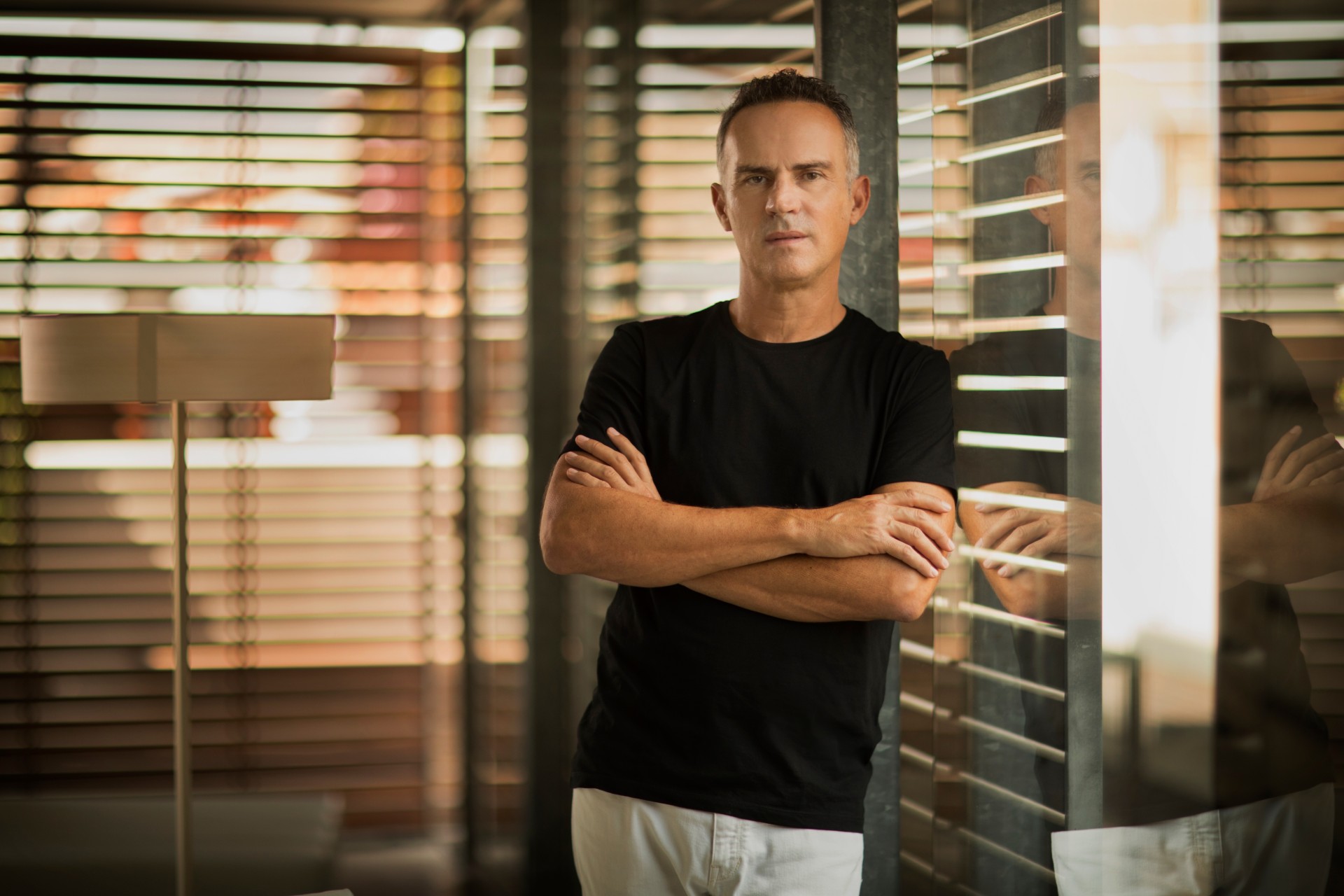After a year that has marked a difference in architecture too, the completion of many projects remained on the cusp in 2020. We are sure they will be brought to life in coming year though. Nonetheless, today at The Decorative Surfaces we are taking a look at three of the most extraordinary projects from 2020. They are characterized by the use of sustainable materials and magnificent shapes in tune with nature and plant life created spaces bursting with light and energy.
Pure energy at the Museum of Fine Arts, Houston
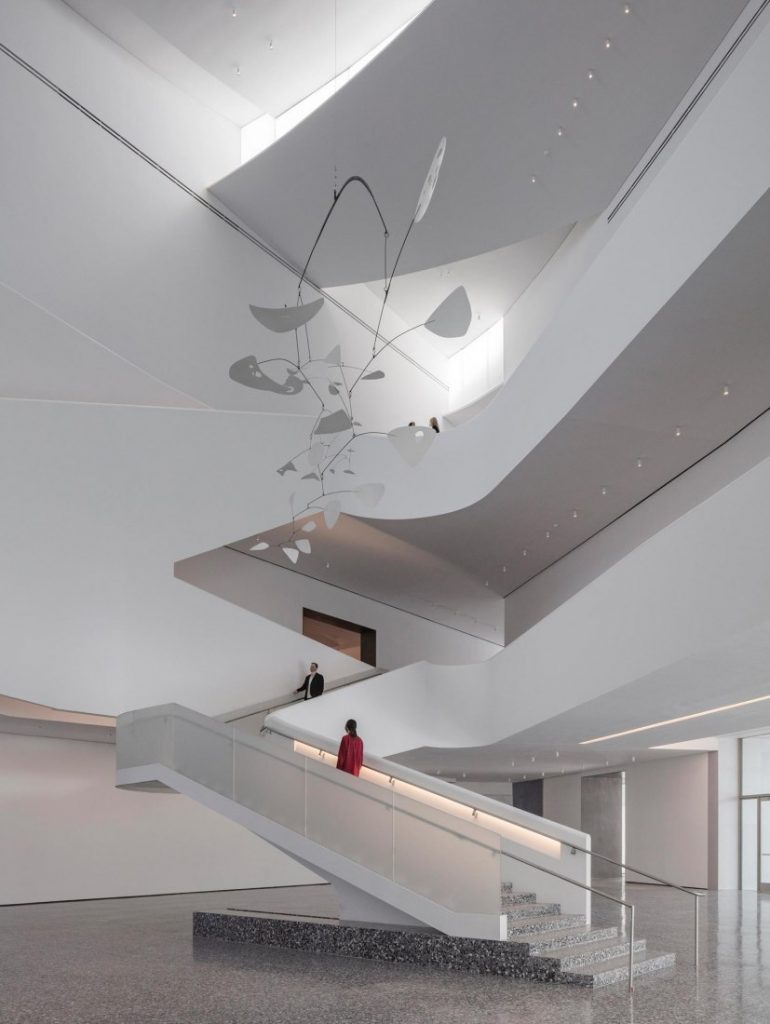 The energy of natural light is the star attraction of the latest expansion to the Nancy and Rich Kinder building. The architecture is part of the redesigned campus of the Museum of Fine Arts, Houston (Texas). This impressive complex includes architectural additions by Mies van de Rohe (1958), Rafael Moneo (2000) and, now, Steven Holl Architects (2020).
The energy of natural light is the star attraction of the latest expansion to the Nancy and Rich Kinder building. The architecture is part of the redesigned campus of the Museum of Fine Arts, Houston (Texas). This impressive complex includes architectural additions by Mies van de Rohe (1958), Rafael Moneo (2000) and, now, Steven Holl Architects (2020).
The new structure has created and incorporated prized versatility and the immense innate movement of nature. Moreover, thanks to the opening-up of the galleries, Holl has managed to draw the eyes of visitors in the new foyer to exuberant vegetation that provides flexibility and energy to the entire campus.
Energy flows from the roof to the ground floor and radiates nature. We see this both in terms of the porosity that characterises the building and the new organic roof structure. This ode to nature can also be seen in the building’s envelope with its translucent glass tubes that meet the curved ceilings.
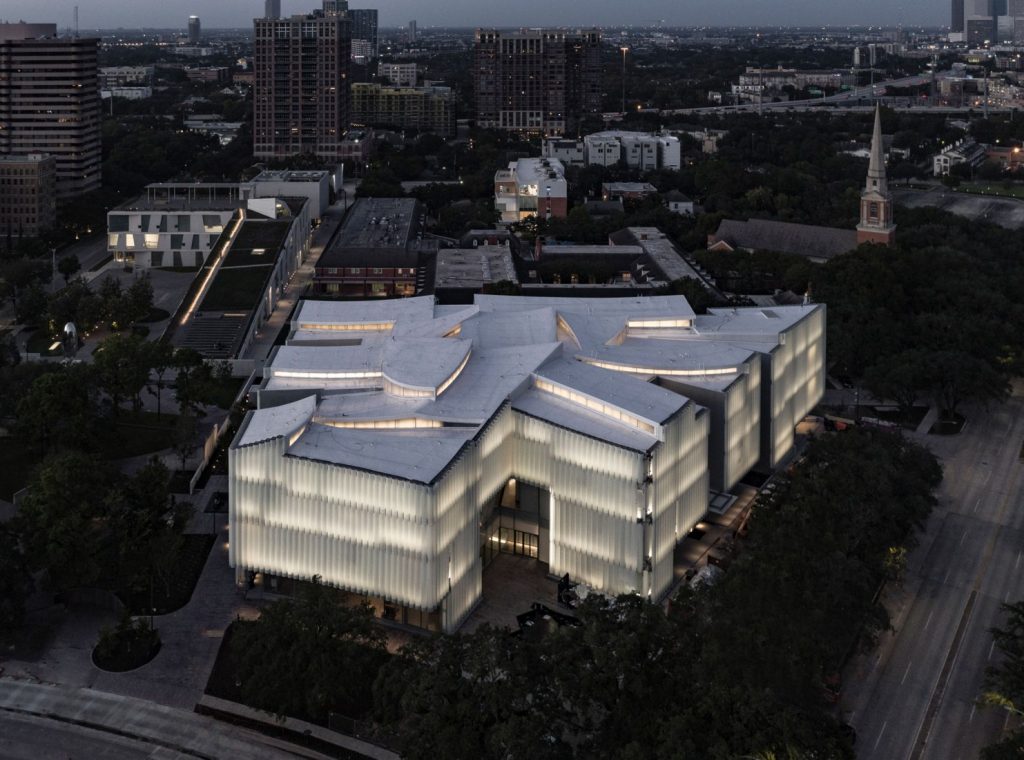 Sustainability and luxury at the Opus hotel in Dubai
Sustainability and luxury at the Opus hotel in Dubai
The existential vacuum of the complicated year we have just had is materialised in the Opus building in the Burj Khalifa district of Dubai. It is one of the most anticipated openings in 2020, designed by Zaha Hadid Architects.
This architectural project houses one of the most avant-garde ME by Meliá hotels with 74 rooms and 19 suites. It also has 12 restaurants (including the Japanese Roka and the Maine Land brasserie), a rooftop and around 5,200 square metres of office space.
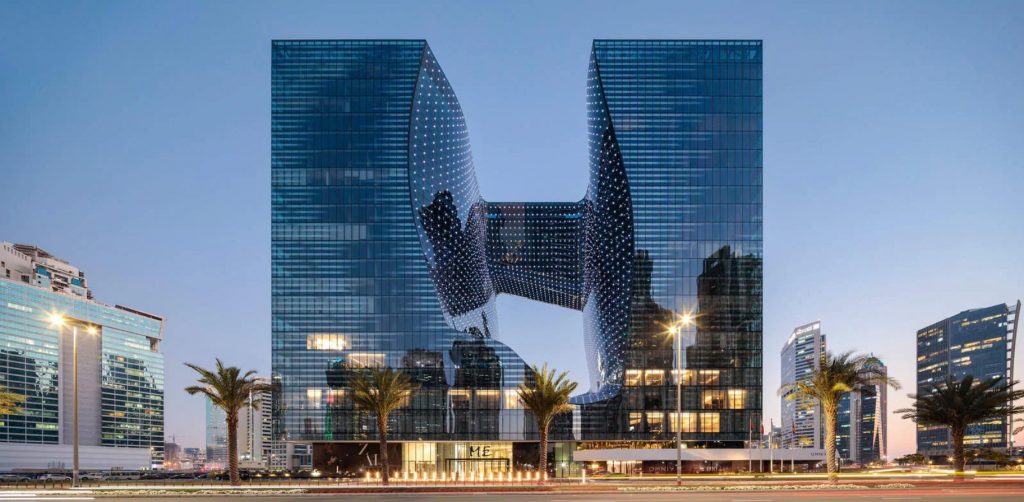 Outside, and akin to the project above, the façade imitates nature in the materials used. Through these, the sky, the sun and the city are reflected. At night, light is also the main protagonist. Individually controlled LED panels that help create an opulent halo characteristic of Dubai’s cityscape.
Outside, and akin to the project above, the façade imitates nature in the materials used. Through these, the sky, the sun and the city are reflected. At night, light is also the main protagonist. Individually controlled LED panels that help create an opulent halo characteristic of Dubai’s cityscape.
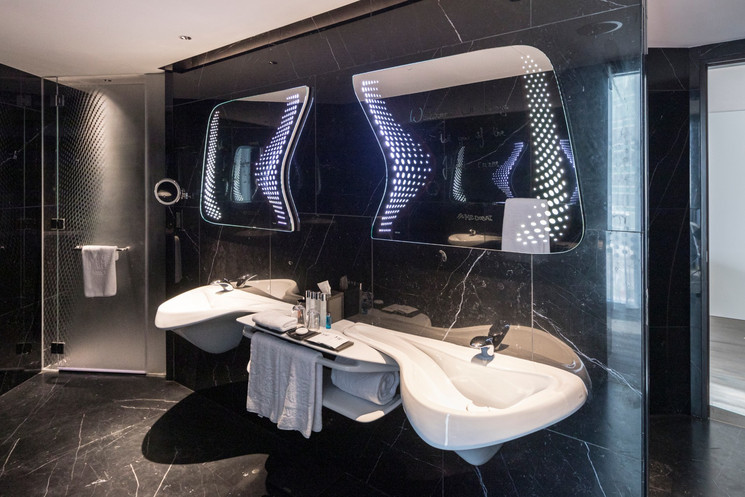 Inside, the signature curves of Zaha Hadid’s architecture provide an incredibly powerful organic feel. The building’s commitment to sustainability is expressed in the use of natural light throughout the structure. It is used both indoors and outdoors, whilst energy conservation is one of the project’s top features.
Inside, the signature curves of Zaha Hadid’s architecture provide an incredibly powerful organic feel. The building’s commitment to sustainability is expressed in the use of natural light throughout the structure. It is used both indoors and outdoors, whilst energy conservation is one of the project’s top features.
Urban nature at the Nanjing Zendai Himalayas
The Nanjing Zendai Himalayas Center is a paeon to contemplation. The Center seeks to unite traditional eastern philosophy and the environment. It offers an integrated space for observers, without skimping on comfort and functionality for urban living. This is the most ambitious project by MAD Architects to date. It was conceived in 2014 as a large-scale urban project that would encompass the city center of Nanjing, in eastern China.
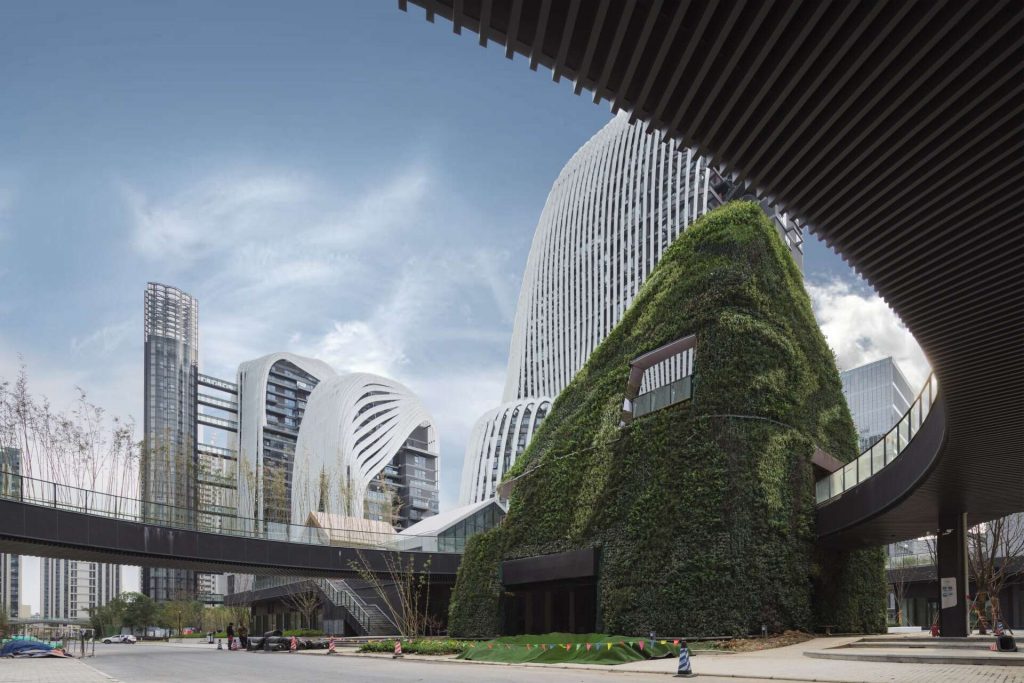 Nature is the real star of this project, designed as a community space. The allegories to the natural setting can be seen in the huge white towers. They mimic marvellous mountains and waterfalls through the glass façade, as if they were ranges and rivers sculpted by the wind.
Nature is the real star of this project, designed as a community space. The allegories to the natural setting can be seen in the huge white towers. They mimic marvellous mountains and waterfalls through the glass façade, as if they were ranges and rivers sculpted by the wind.
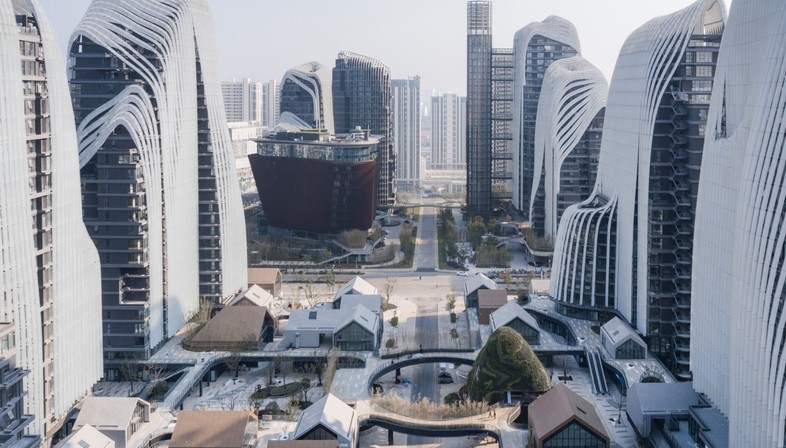 The visual effect is achieved by combining the glass façades with white silhouettes that offer both visual flare and functionality. It provides a great amount of light and ventilation, serving as a huge sustainability element for the project. In addition, water is the backbone that connects all the buildings in the complex with outstanding newly-created lagoons and creeks.
The visual effect is achieved by combining the glass façades with white silhouettes that offer both visual flare and functionality. It provides a great amount of light and ventilation, serving as a huge sustainability element for the project. In addition, water is the backbone that connects all the buildings in the complex with outstanding newly-created lagoons and creeks.

